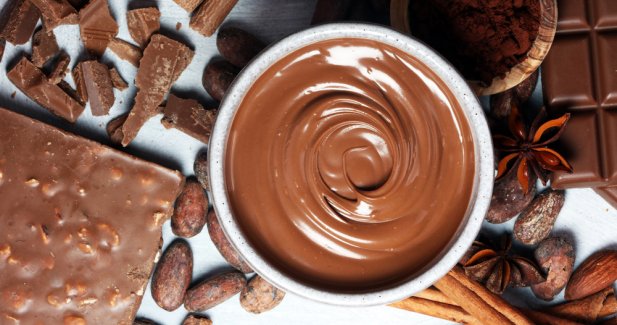
What is the Melting Point of Chocolate?
January 9, 2024
Ever asked yourself why chocolate gets all gooey and delicious when it warms up? Let's dive into the yummy world of chocolate and find out why it goes from solid to melty goodness in your mouth!
Chocolate, the beloved treat that has captured the hearts of millions around the world, is not just a delight for the taste buds but also a subject of scientific fascination.
Have you ever wondered why chocolate has that irresistible melt-in-your-mouth quality? The answer lies in the precise temperature at which it transforms from a solid to a liquid – its melting point.
The Composition of Chocolate
To understand the melting point of chocolate, it's crucial to first examine its composition.
Chocolate is made from a combination of cocoa solids, cocoa butter, sugar, and, in the case of milk chocolate, milk solids. Cocoa butter, the fat extracted from cocoa beans, is the primary factor influencing the melting characteristics of chocolate.
Cocoa butter is a unique fat with a polymorphic structure, meaning it can exist in multiple crystalline forms. The specific crystalline form that cocoa butter adopts has a profound impact on the texture, appearance, and, most importantly, the melting point of chocolate.
Polymorphic Forms of Cocoa Butter
Cocoa butter can crystallize in six different forms, labeled as polymorphs I through VI. Each form has a distinct melting point, and the transition between these forms greatly affects the overall quality of chocolate.
- Form I: This is the most unstable form and has a low melting point, resulting in a soft and dull chocolate.
- Forms II and III: These are intermediate forms with higher melting points, contributing to a more stable chocolate structure.
- Form IV: This is the most desirable crystalline form, offering a smooth texture and a higher melting point that allows chocolate to stay solid at room temperature but melt easily in the mouth.
- Forms V and VI: These forms have higher melting points and are generally undesirable in chocolate production, as they can lead to graininess and a waxy texture.
Factors Influencing Melting Point
Several factors influence the melting point of chocolate, including the temperature at which it is tempered during production, the quality of cocoa butter used, and the presence of other ingredients like sugar and milk solids. Improper tempering can result in chocolate that is either too soft or too hard, affecting its overall appeal.
The melting point of chocolate is a delicate balance of art and science. Achieving the perfect texture and mouthfeel requires precise control over factors like tempering and cocoa butter crystallization.
The next time you savor a piece of chocolate, appreciate the craftsmanship involved in achieving that delightful melt-in-your-mouth experience. The sweet science behind the melting point of chocolate adds another layer of complexity to our enjoyment of this beloved treat.
Have you tried melting a chocolate? Share your thoughts in the comment section below. Don’t forget to follow our Facebook and Twitter accounts for more fun and interesting chocolatey ideas!
- Easy Chocolate Easter Nests Recipe - April 15, 2025
- The Best Chocolate Gifts for Easter (That Everyone Will Love!) - April 8, 2025
- National Chocolate Mousse Day: How to Make the Perfect Chocolate Mousse - April 1, 2025


